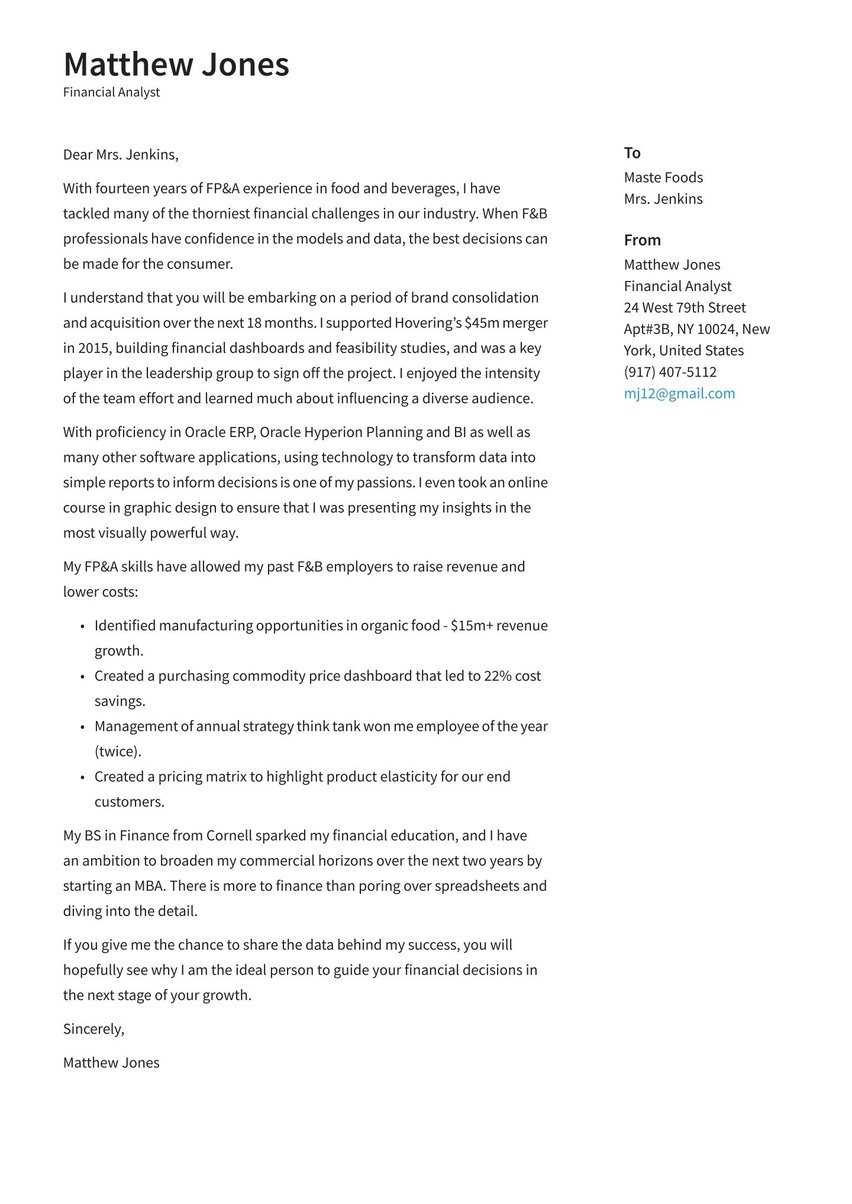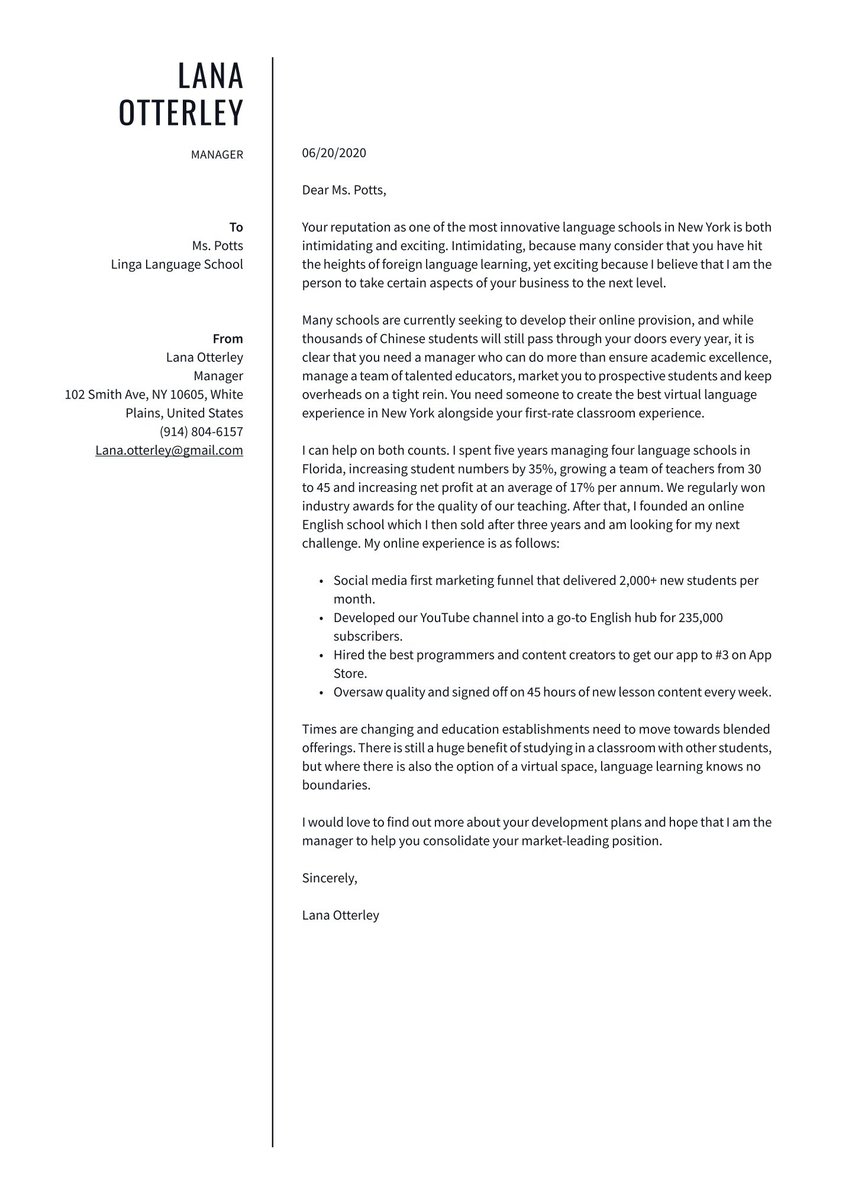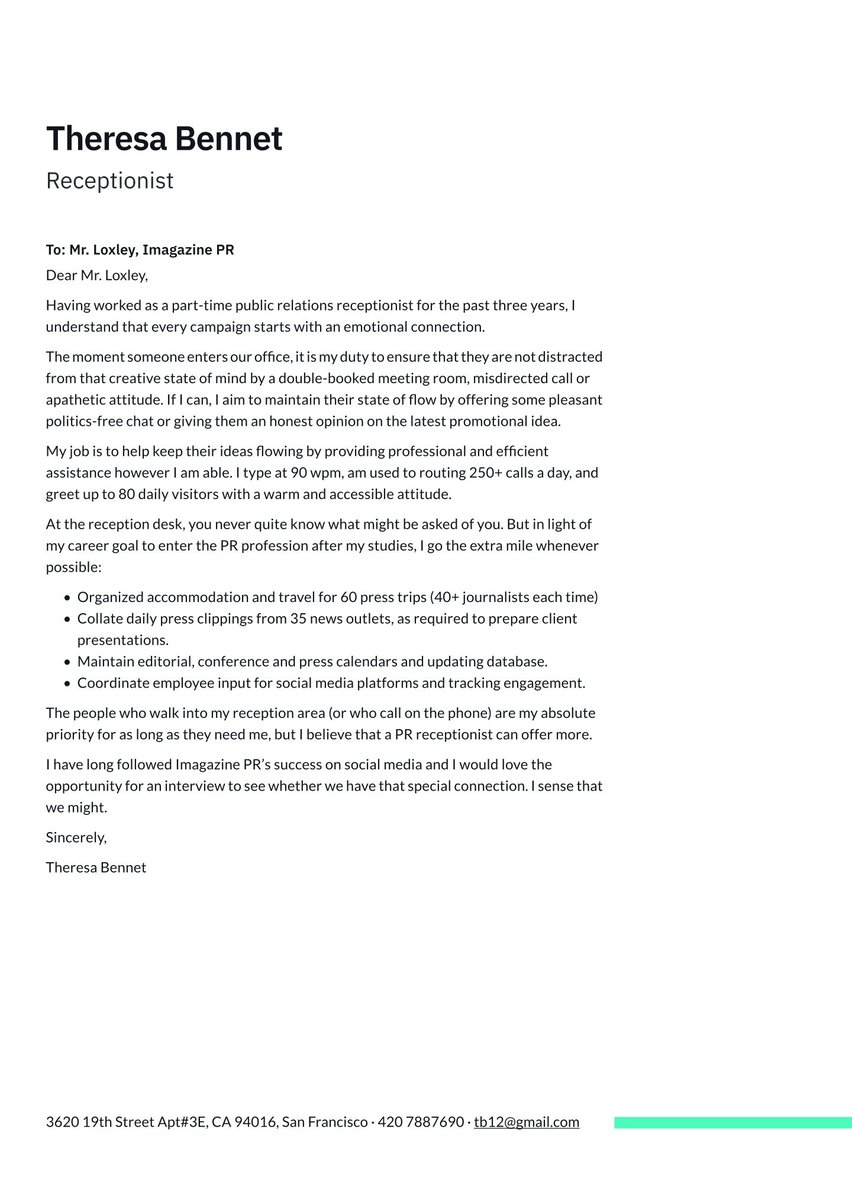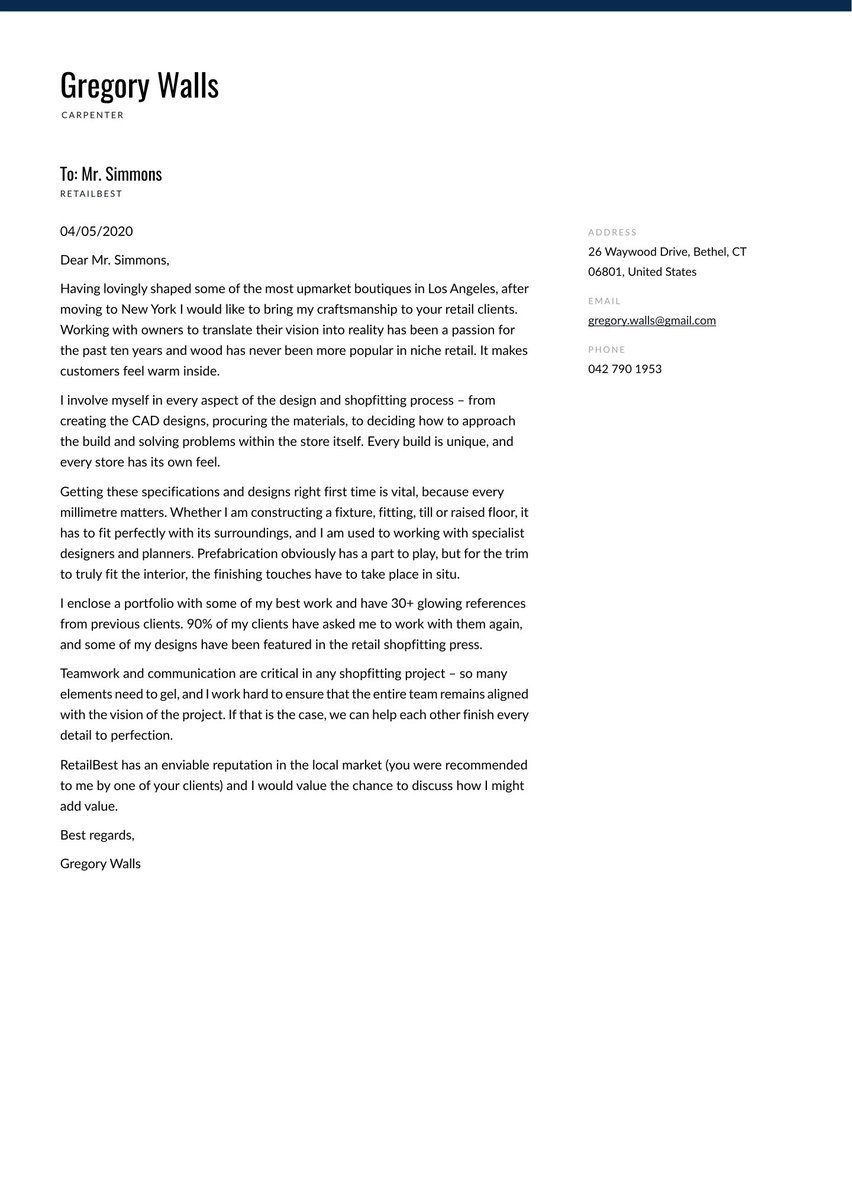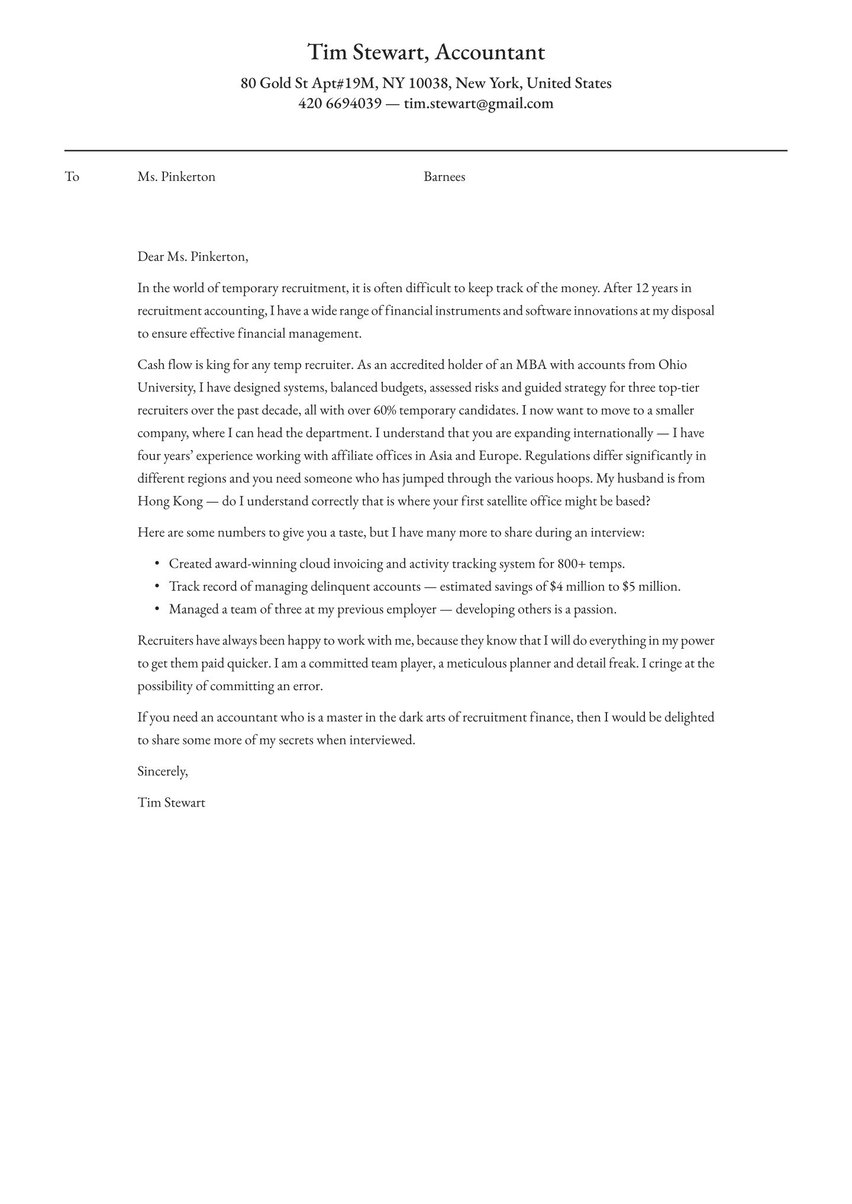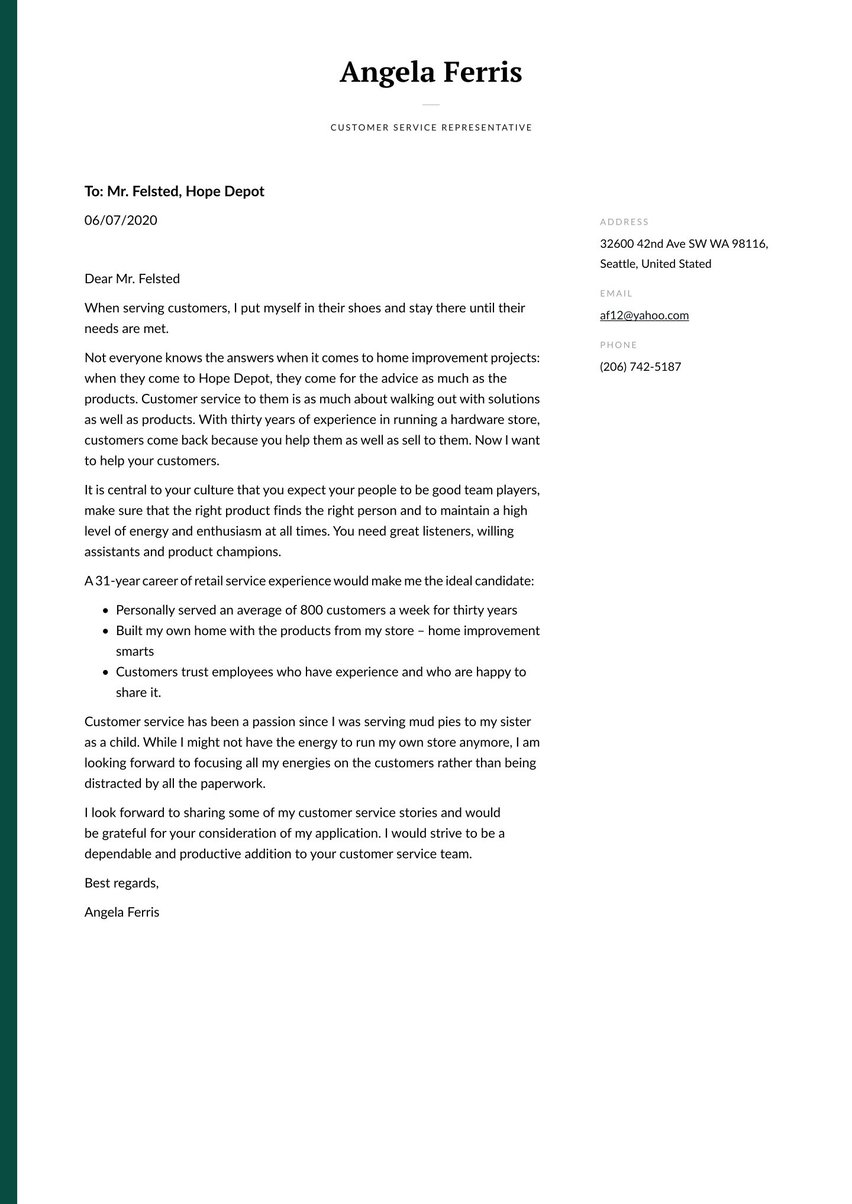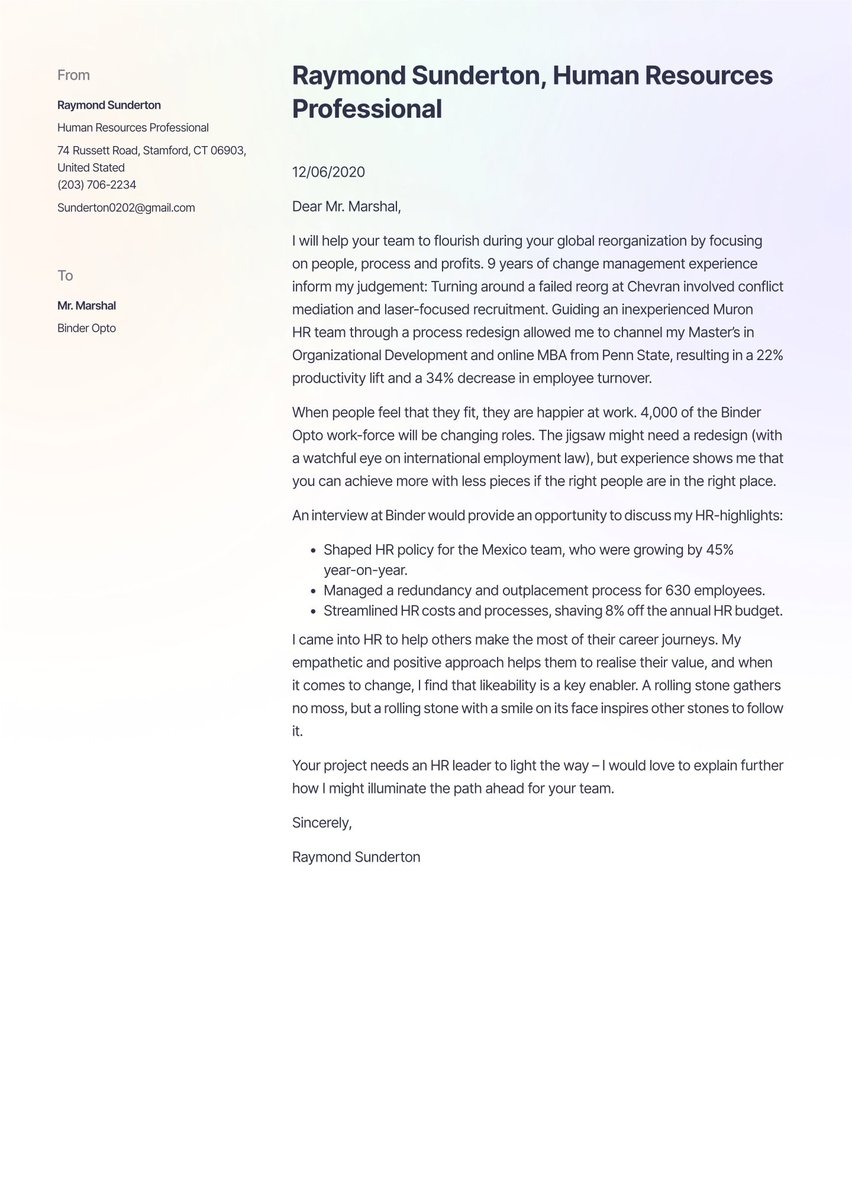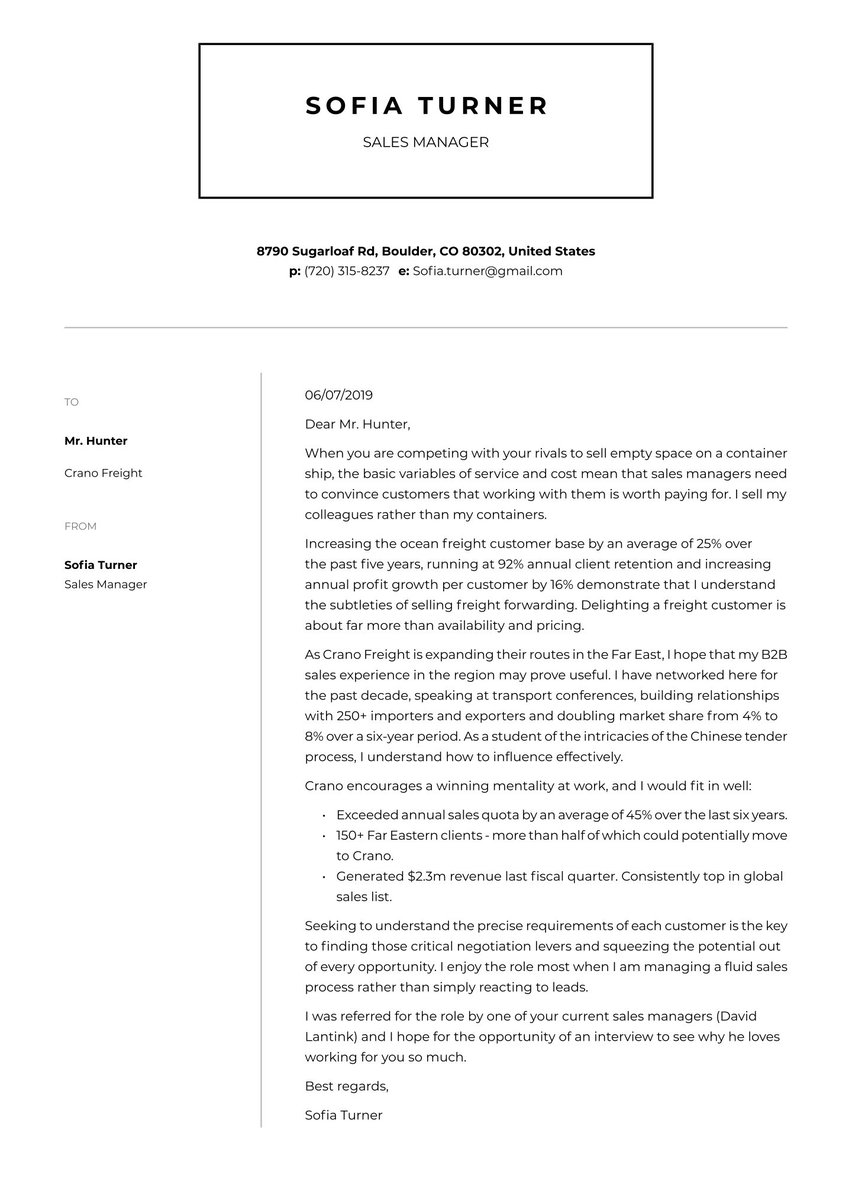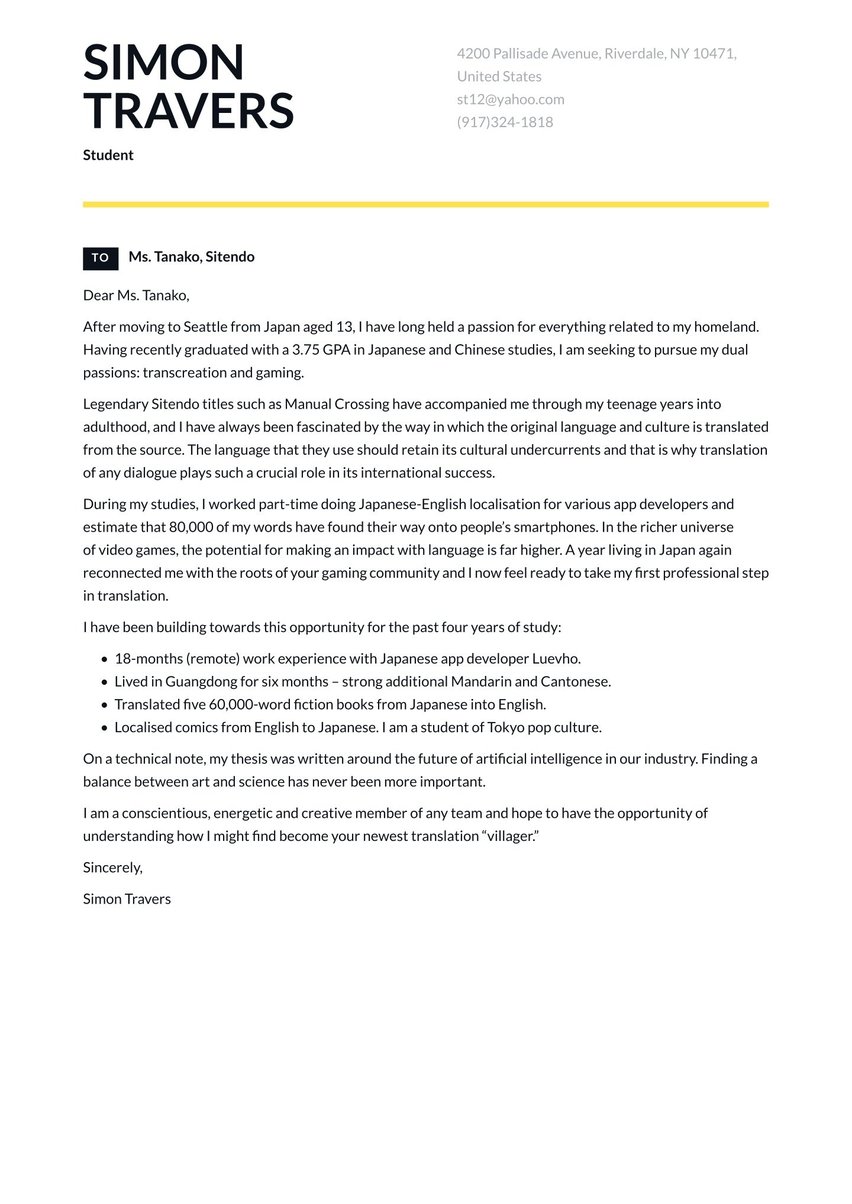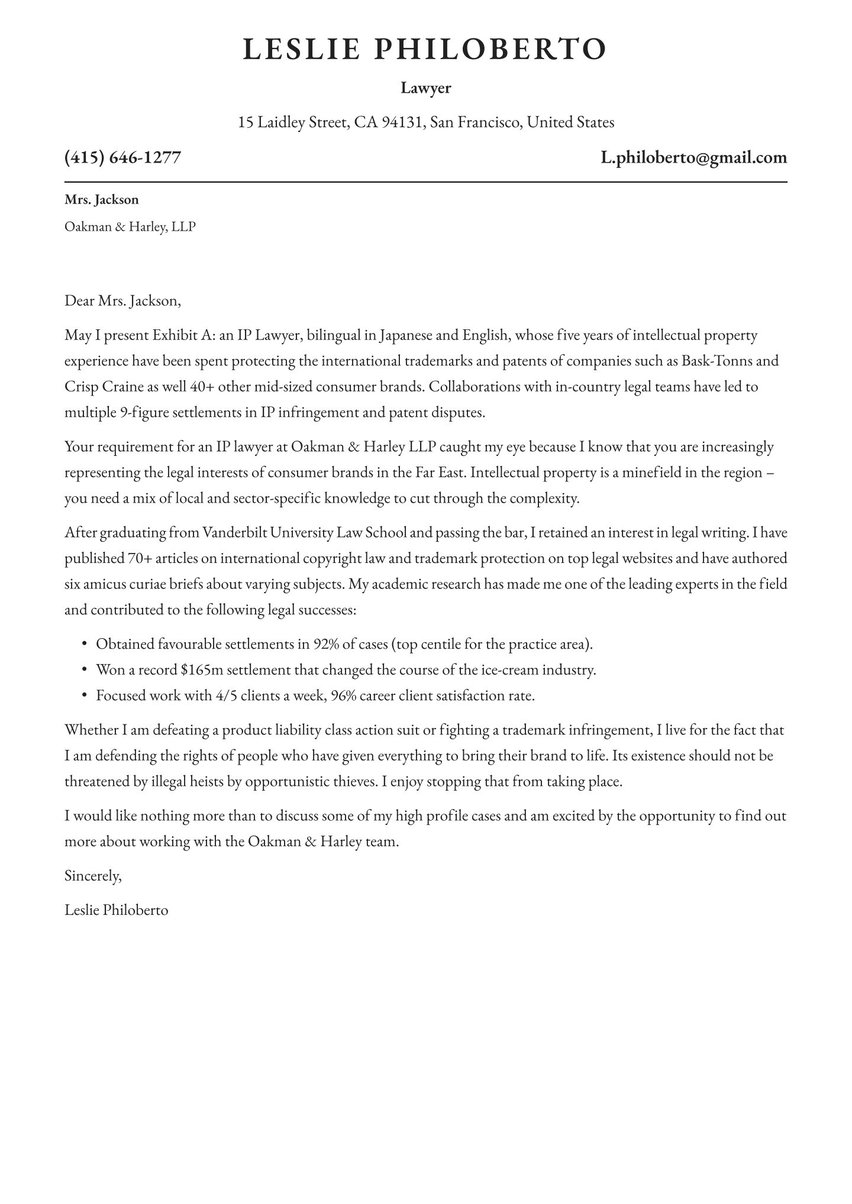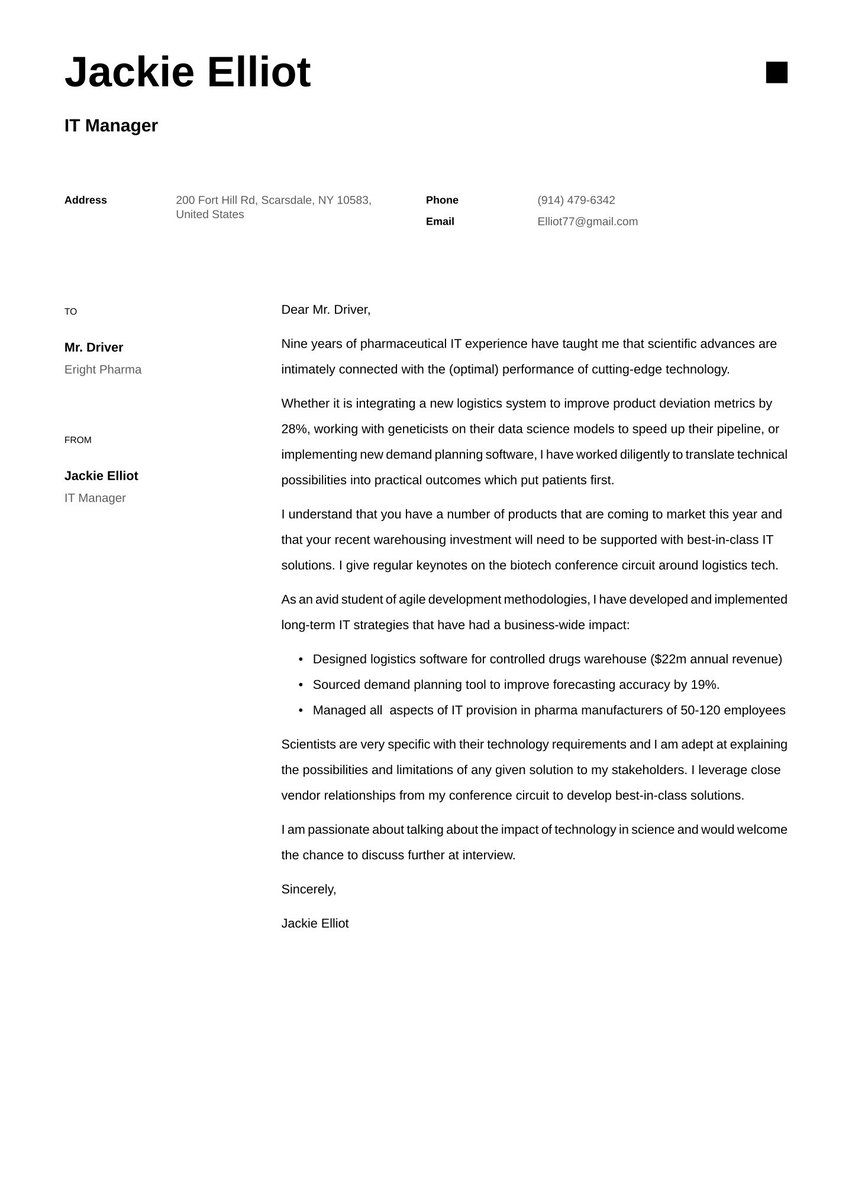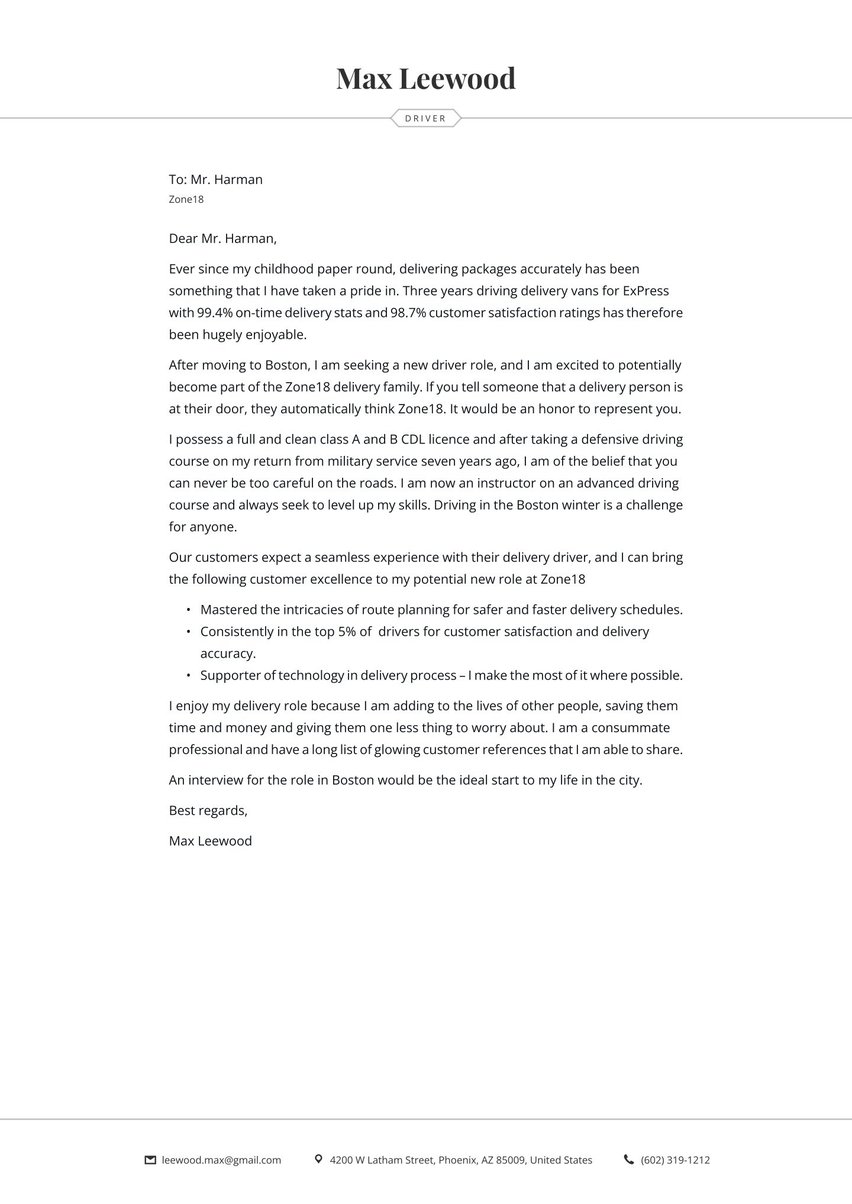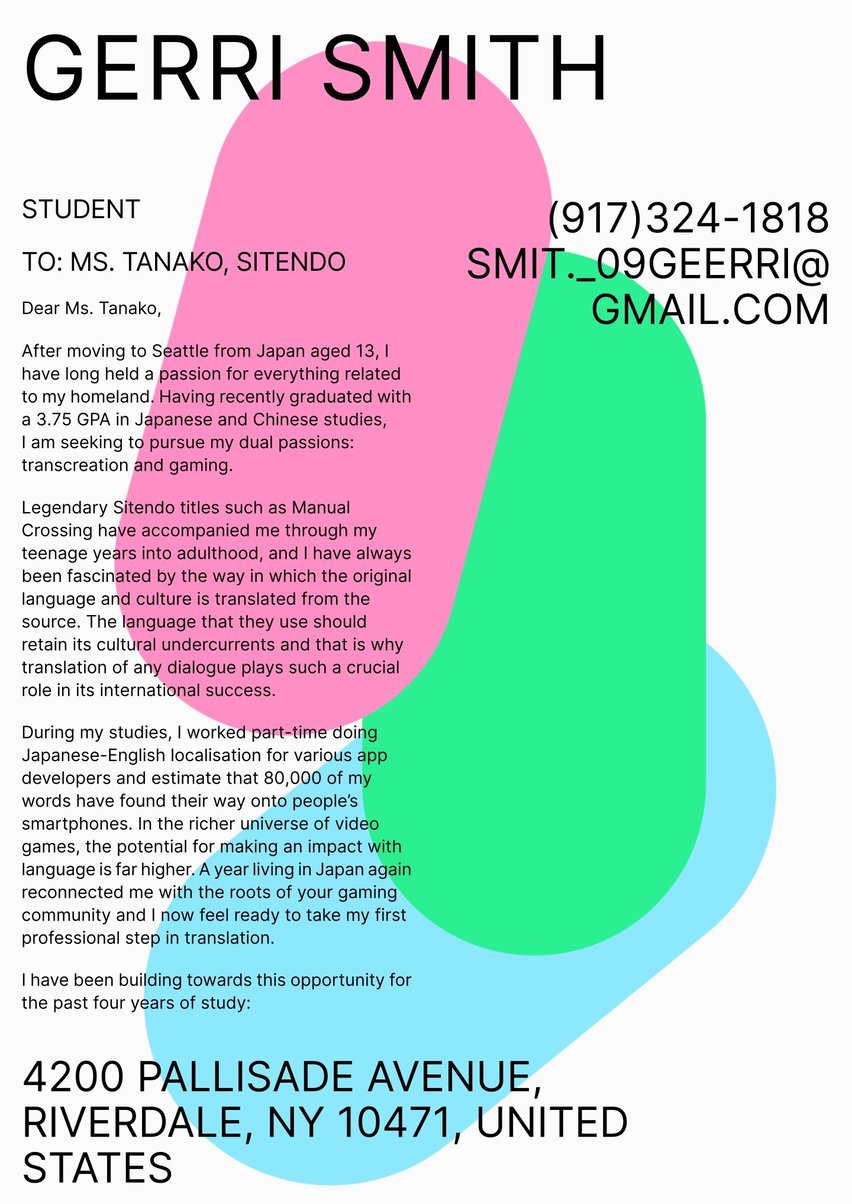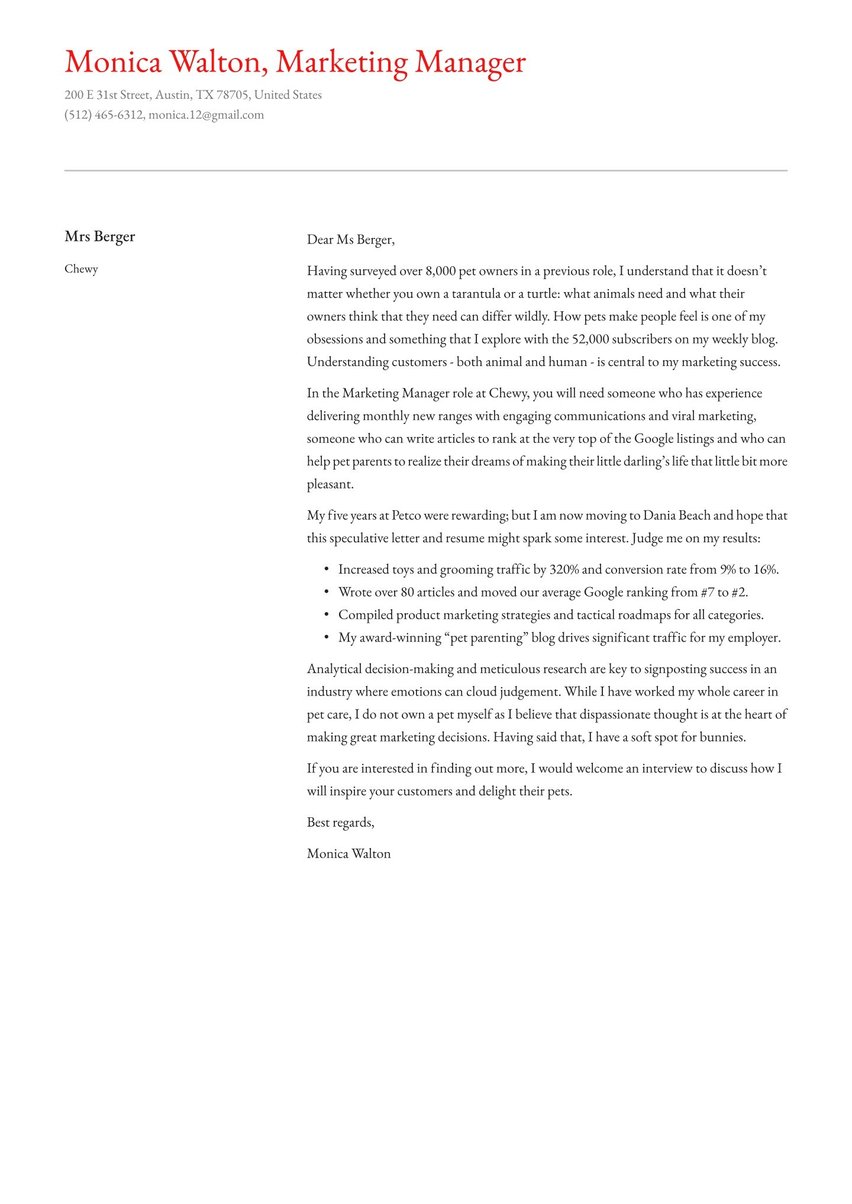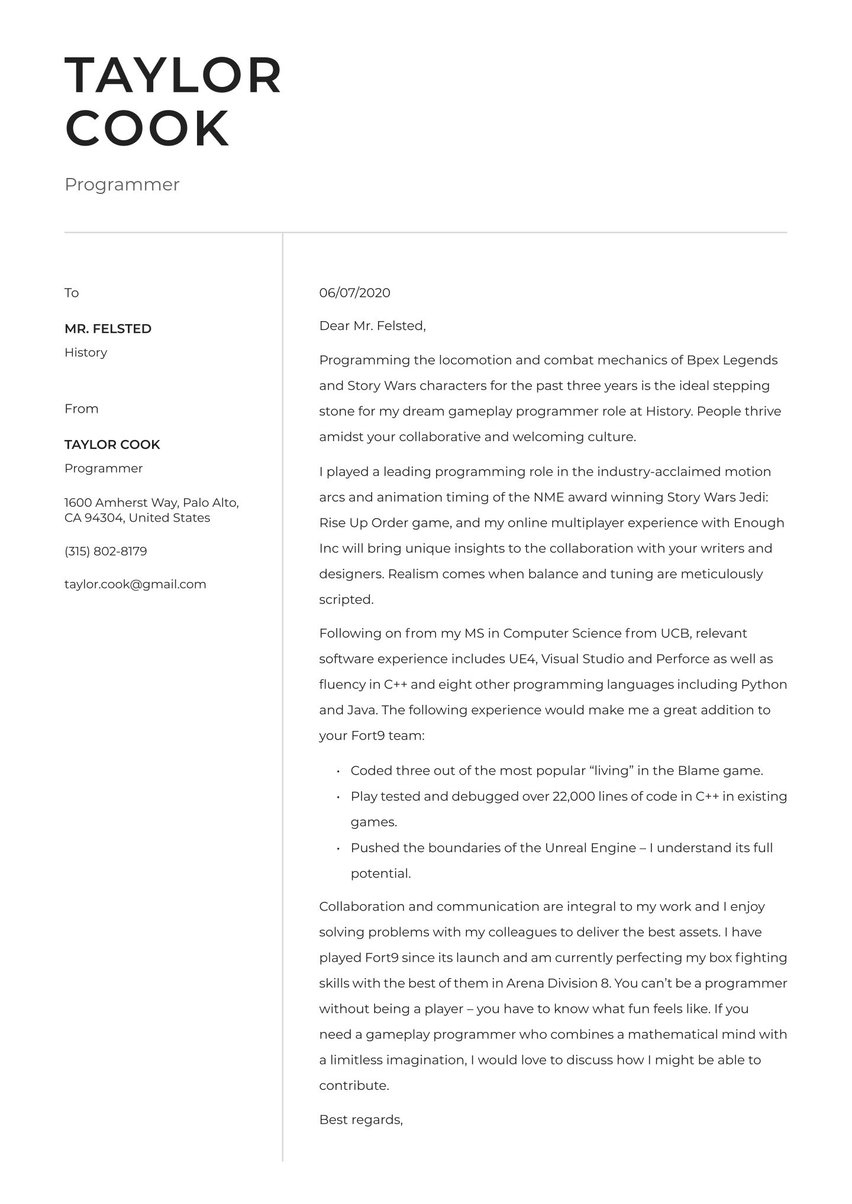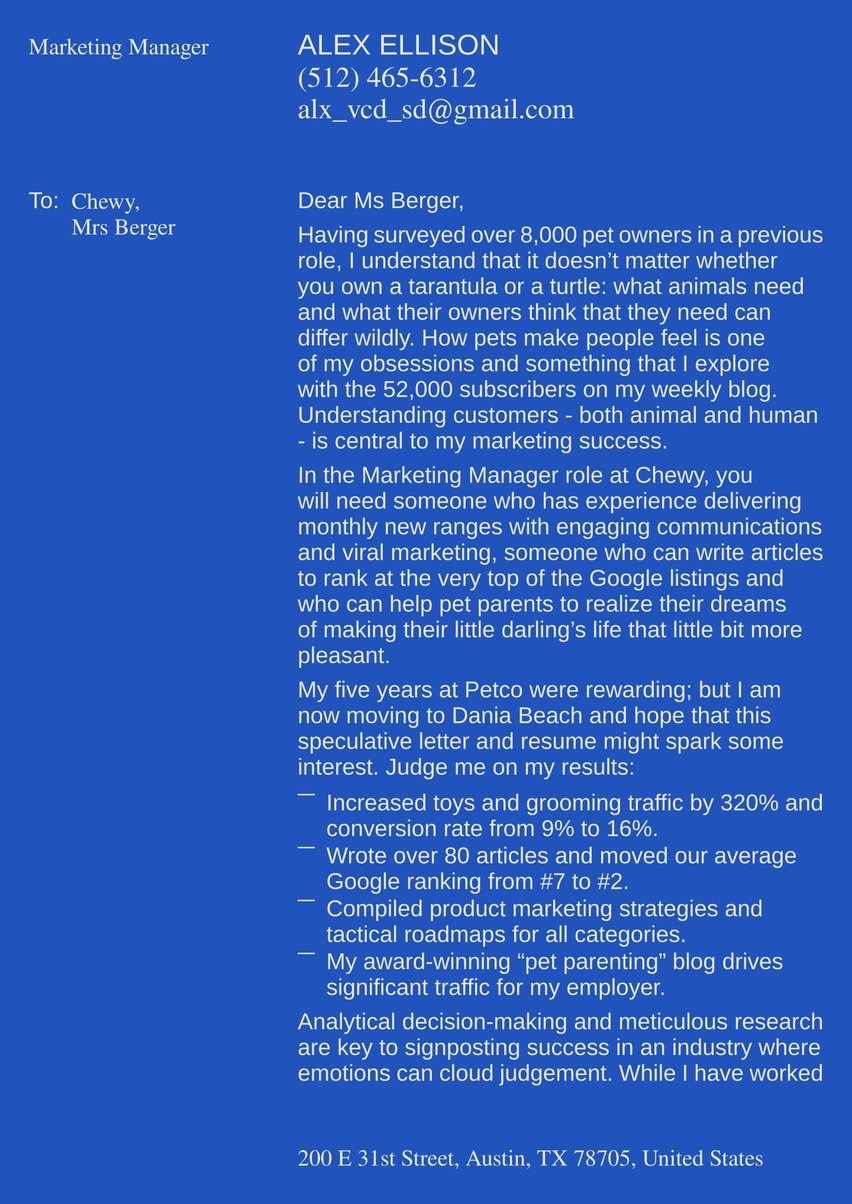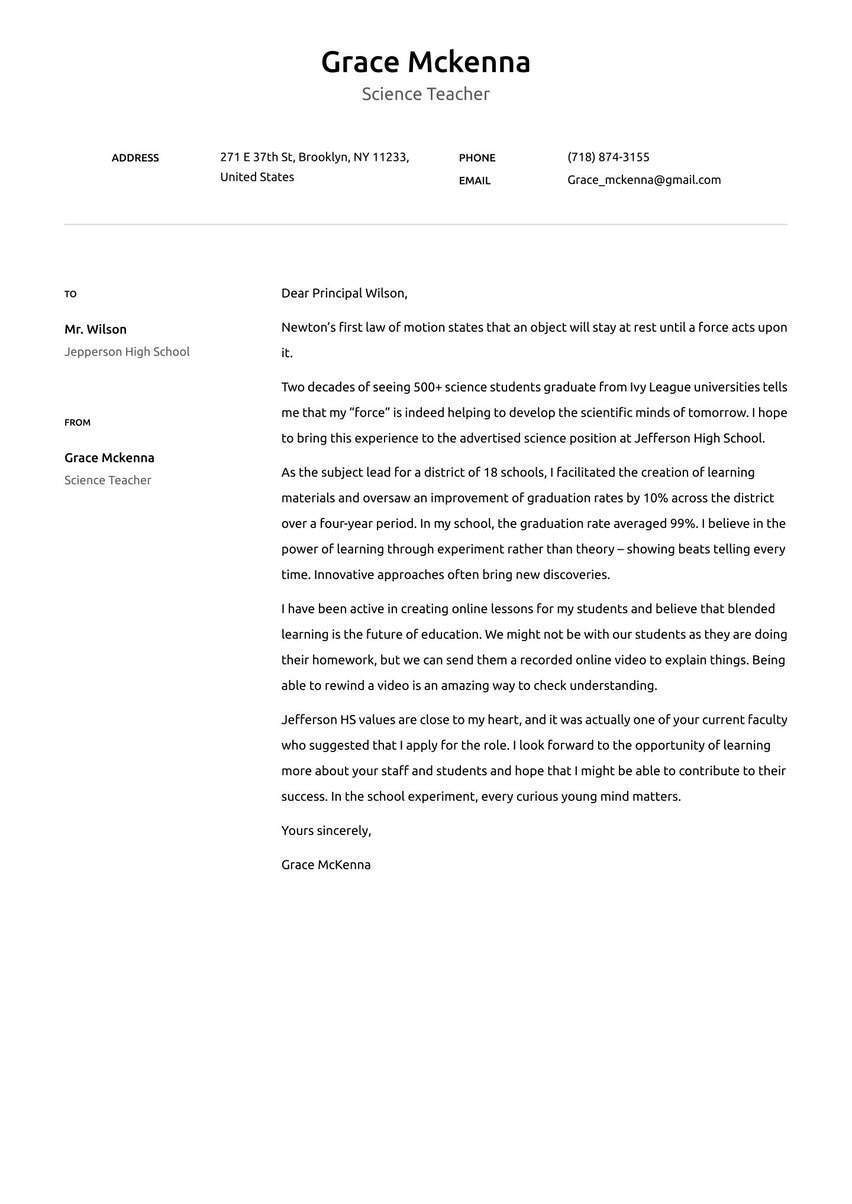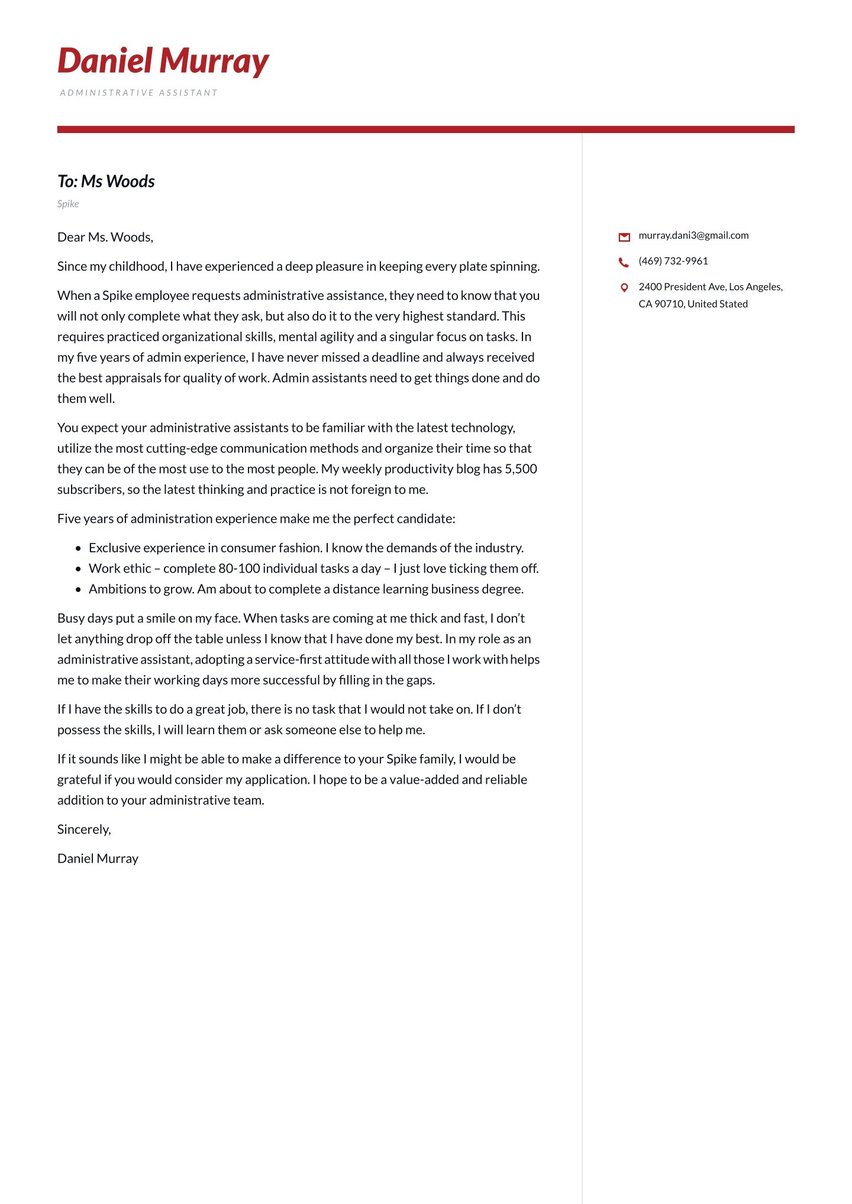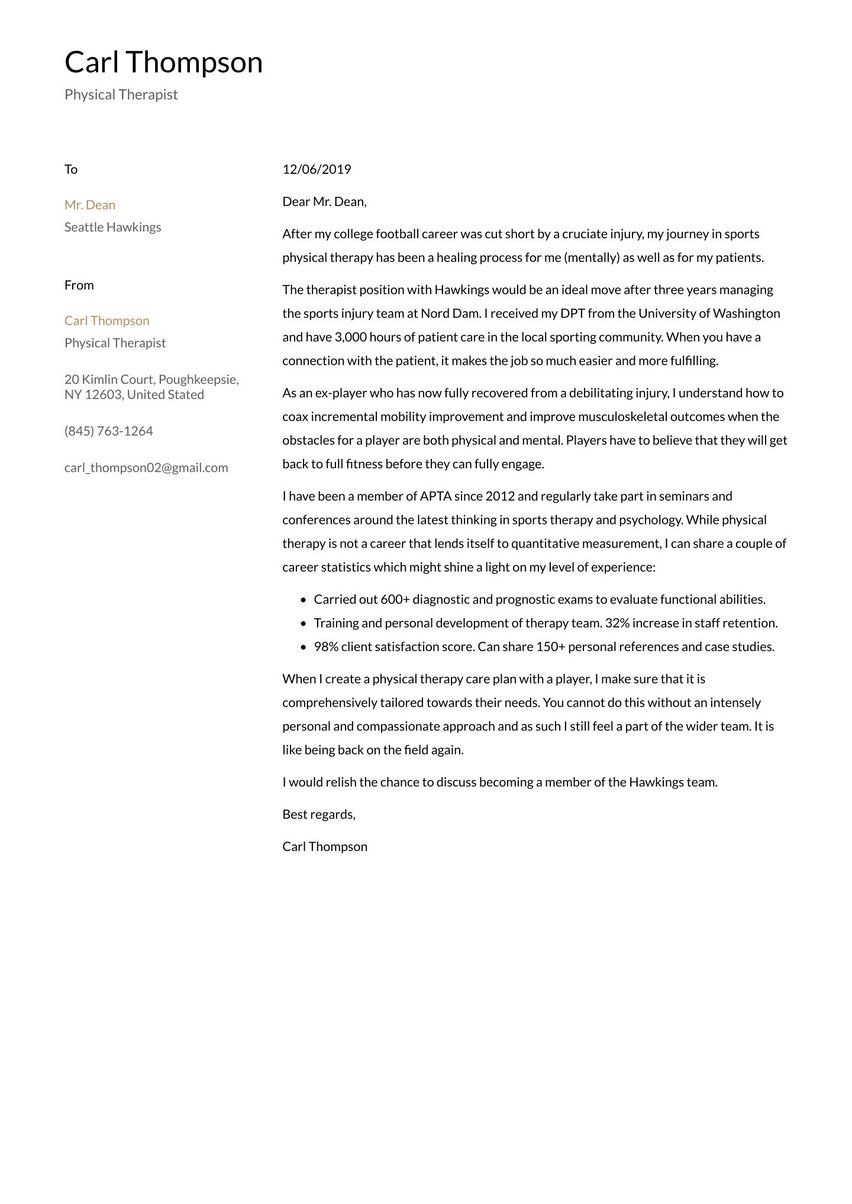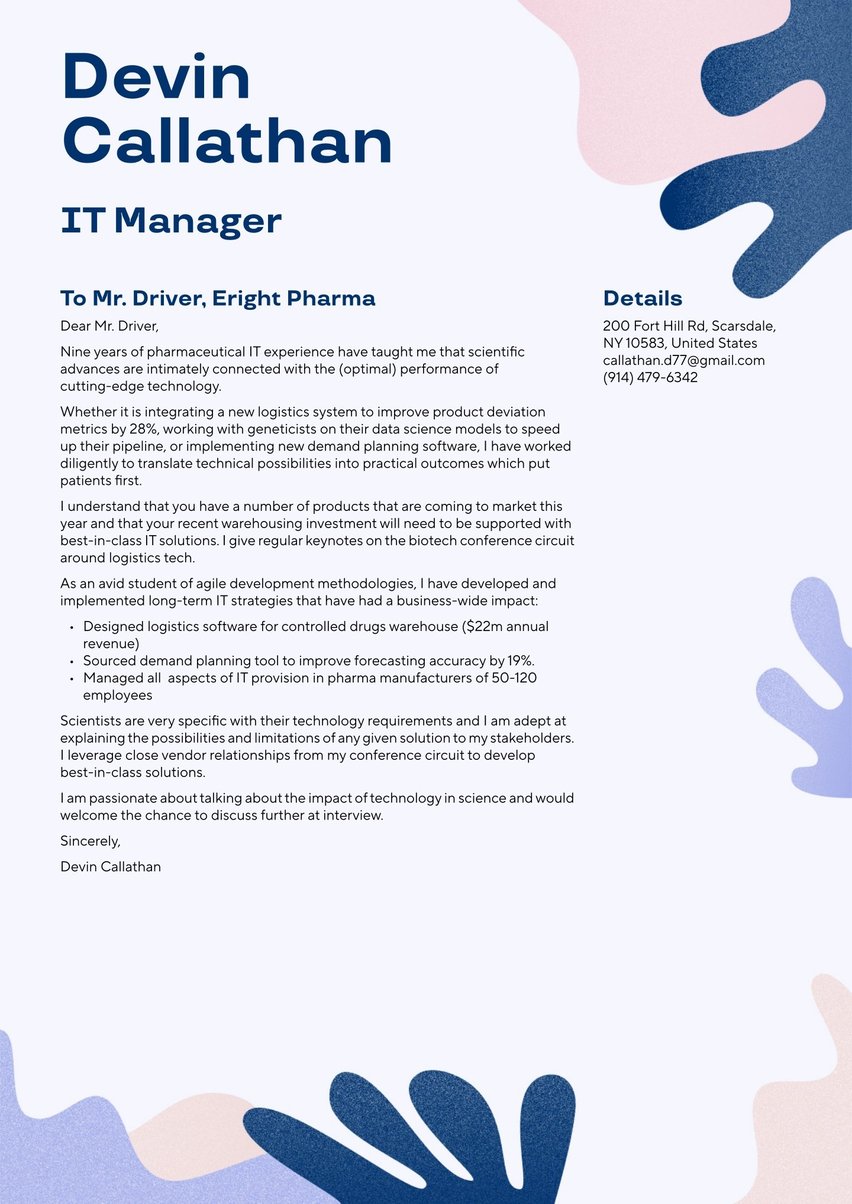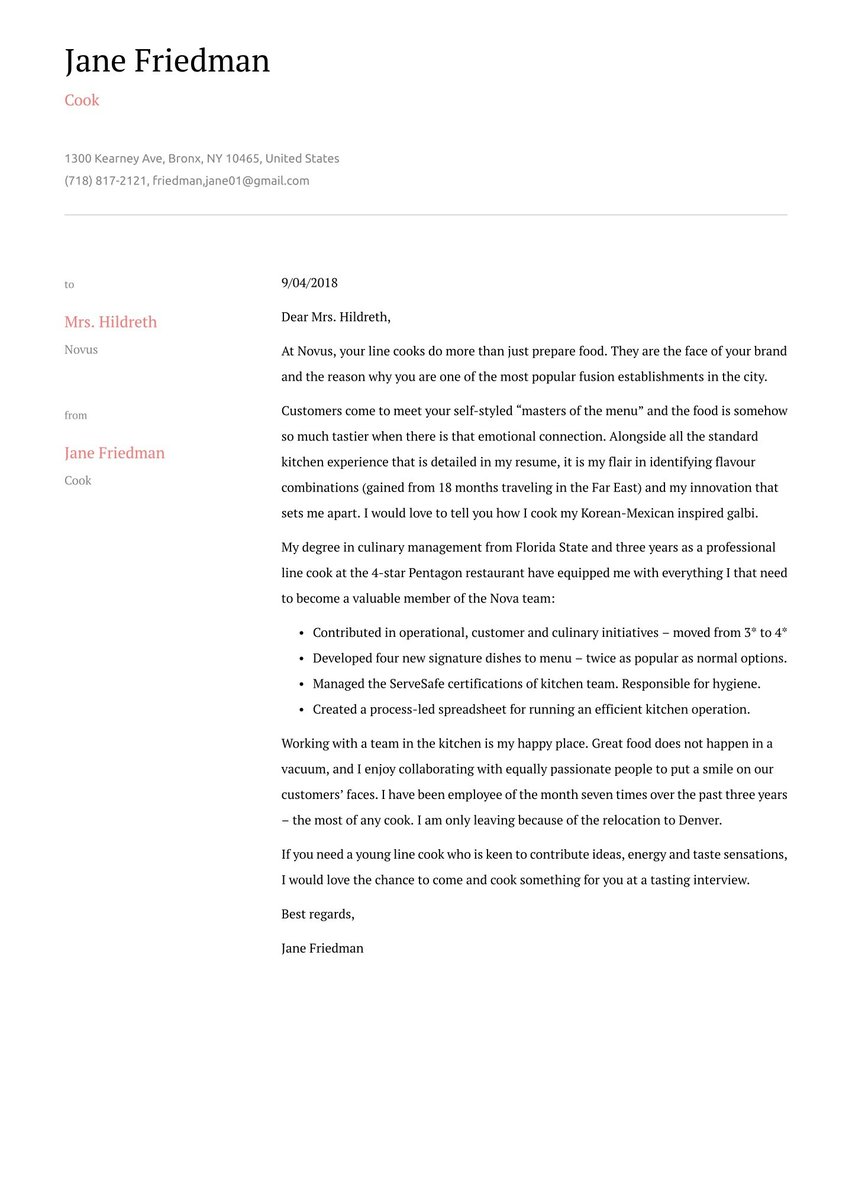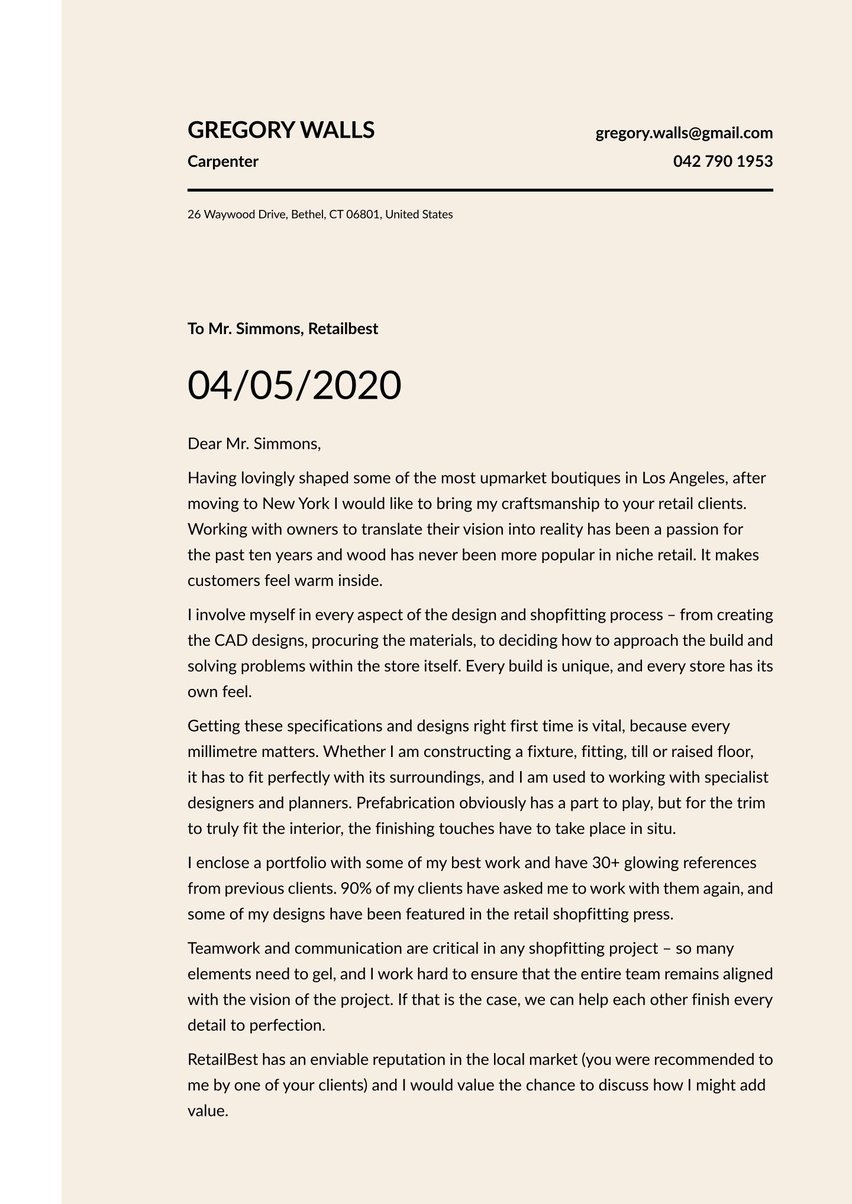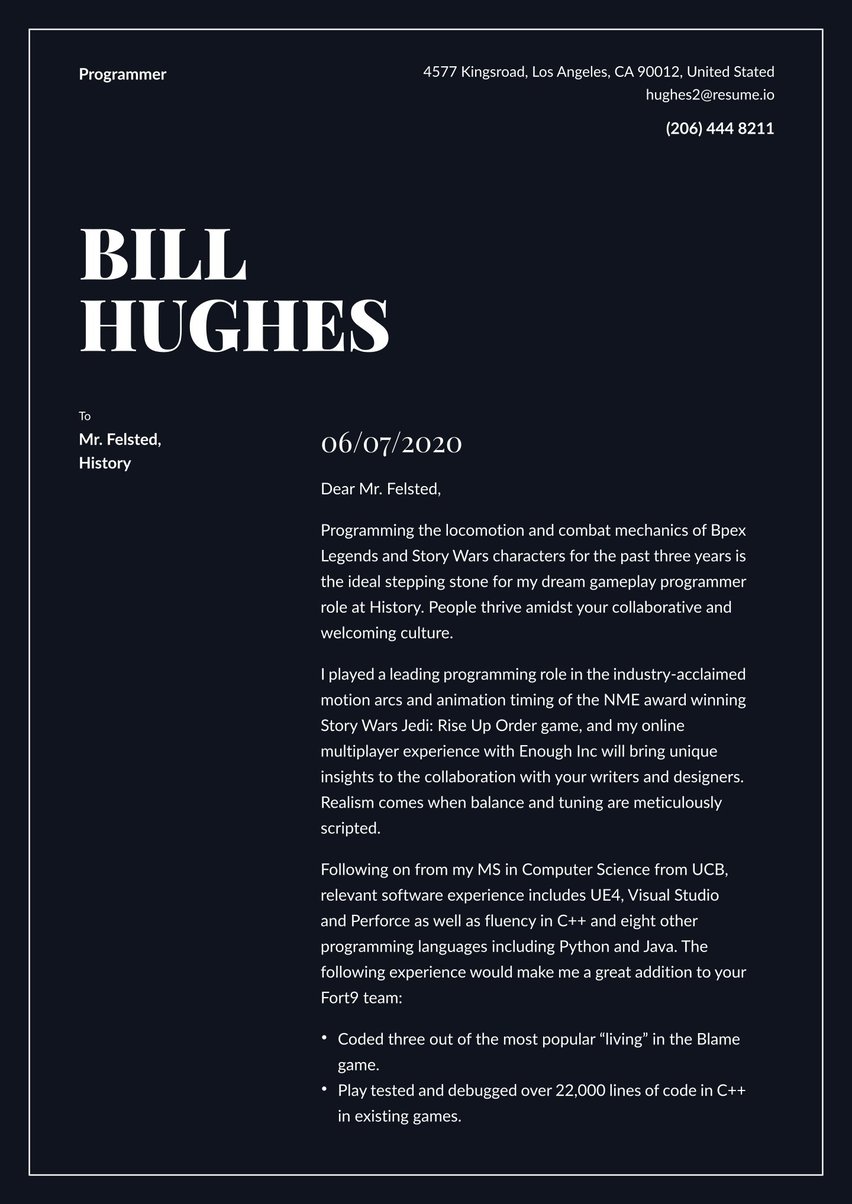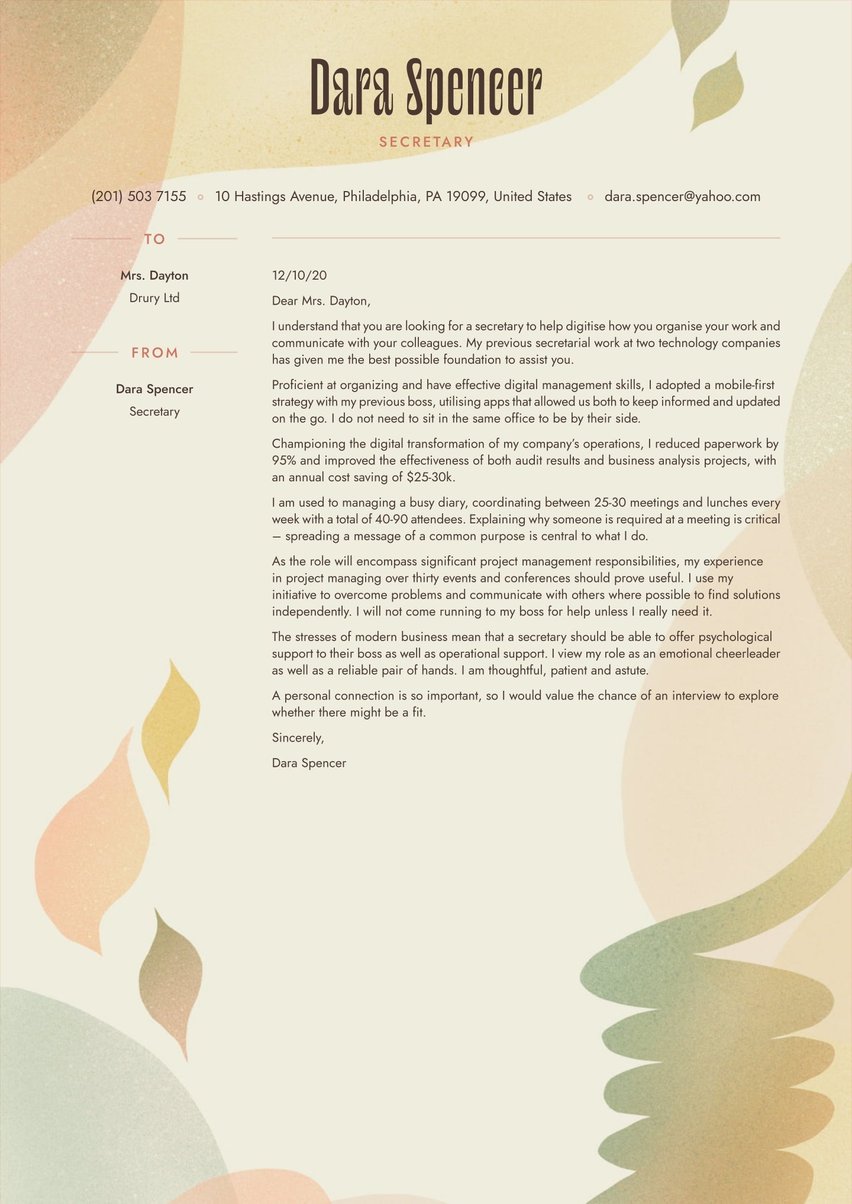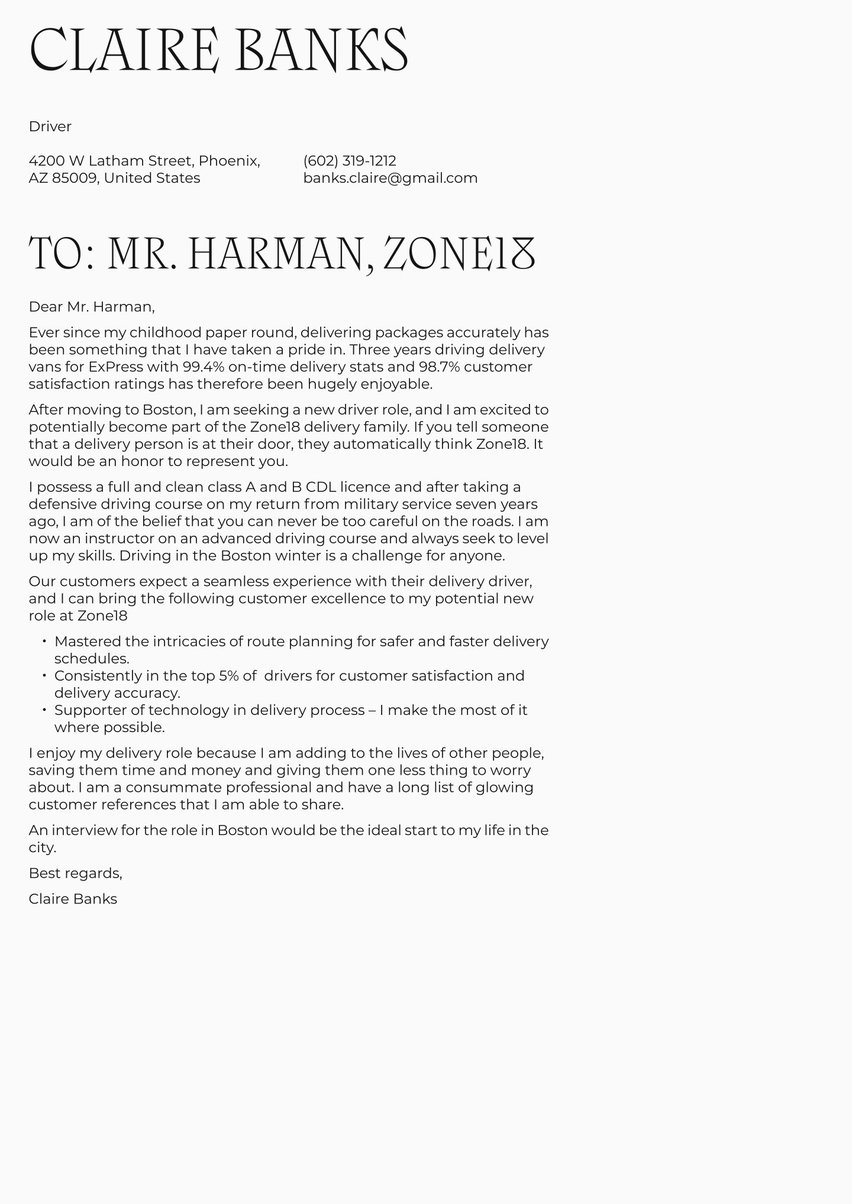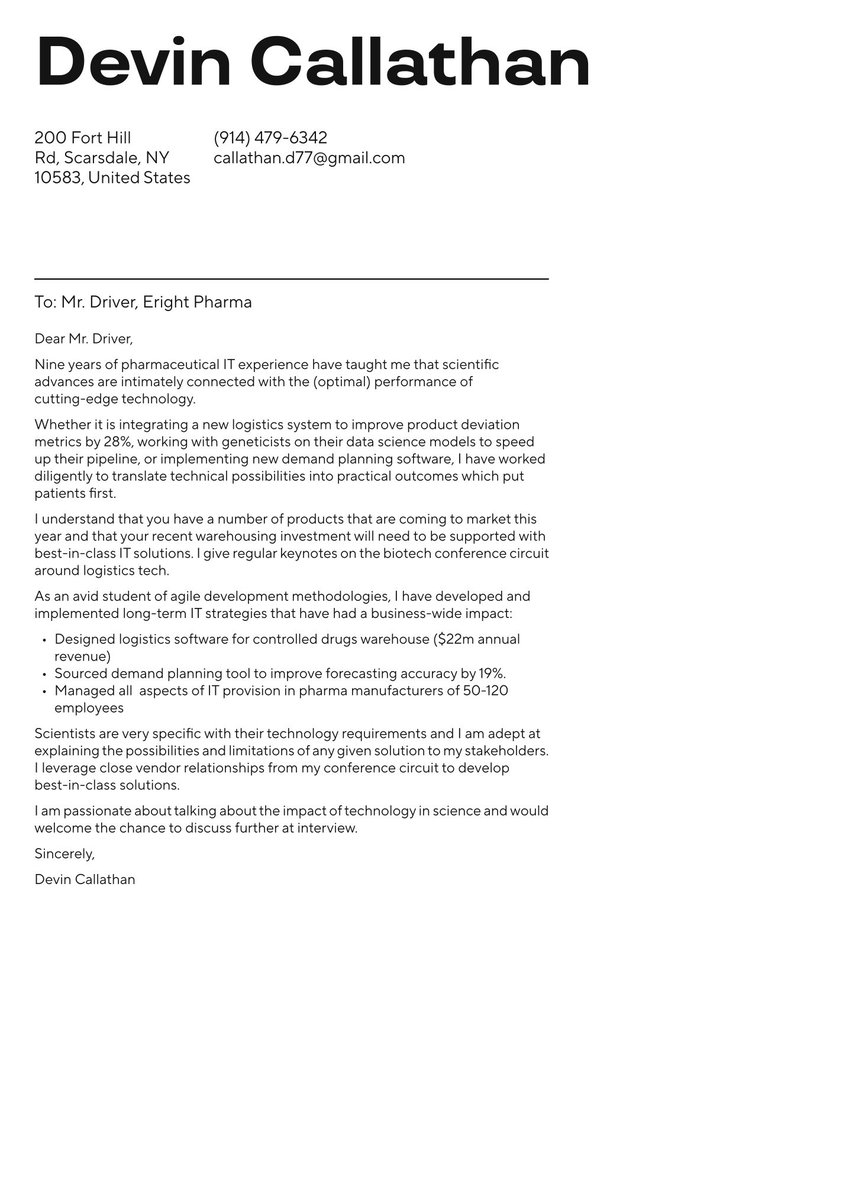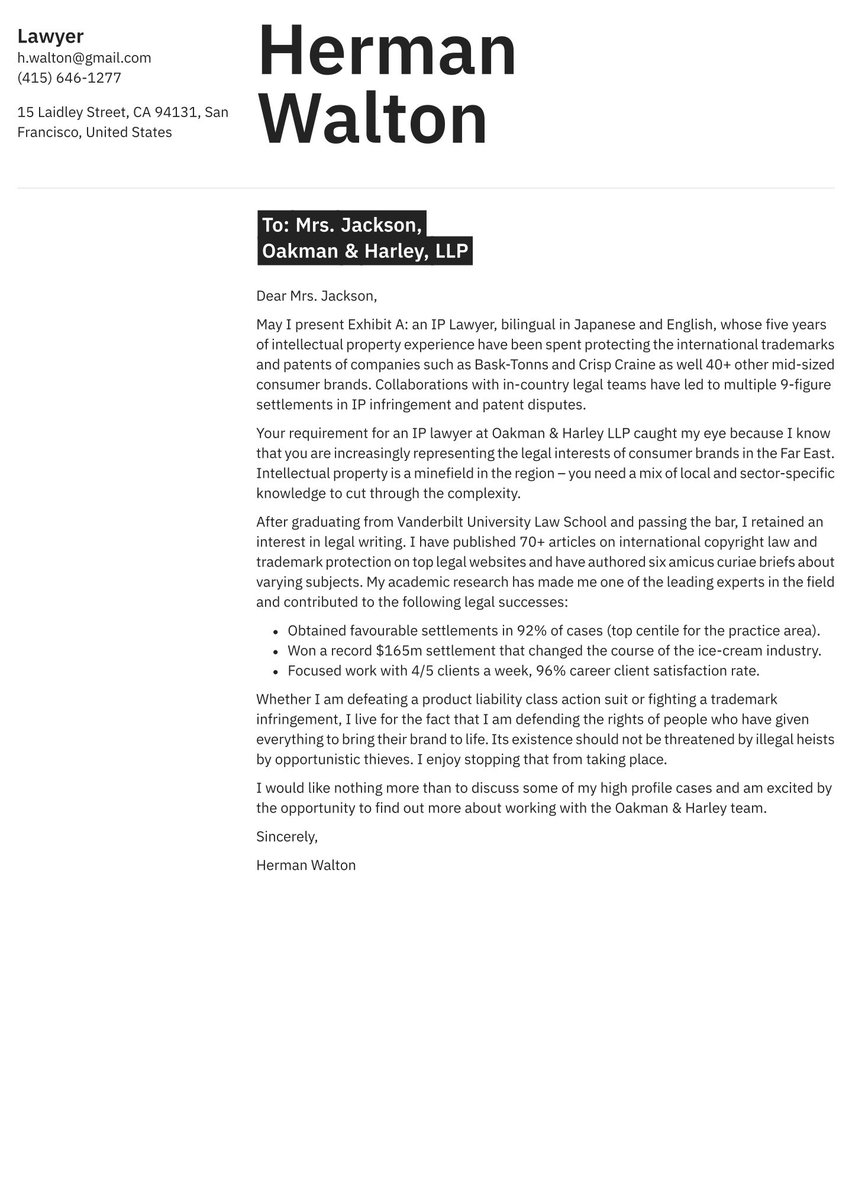Although classrooms may be the most familiar work setting for paraprofessionals, the range of career opportunities in other fields is diverse — from law, engineering and finance to healthcare and veterinary medicine. No matter what kind of expertise makes you an ideal job candidate, be sure it’s conveyed to full advantage in your paraprofessional cover letter.
This writing guide, along with paraprofessional cover letter examples you can adapt, will cover these topics:
- How your paraprofessional cover letter should be structured
- Ensuring each cover letter section achieves its objective: header, greeting, introduction, body and conclusion
- Common cover letter mistakes to avoid.
Resume.io offers writing tools, tips and templates to help job seekers in myriad professions. Our resources include more than 125 occupation-specific writing guides and corresponding cover letter examples.
Best format for a paraprofessional cover letter
Being highly organized and efficient are key expectations for any paraprofessional role, and a properly structured cover letter reflects your awareness of that. The same basic framework is suitable for any occupation, with each part serving a vital purpose:
- Header
- Greeting
- Introduction
- Body
- Closing and sign-off
Together, they add up to a neatly compact package — no more than 400 words on a single page. An interview-winning cover letter looks inviting to read at first glance. It’s clean and polished with enough white space and minimal graphic touches to offset the text, in a legible font. By the last sentence, it will have served as a firm written handshake with the employer you hope to work for.
Our comprehensive cover letter guide provides expert advice on writing, design and formatting.
Below is a paraprofessional cover letter example that you can customize for the position and hiring organization:
Dear Mrs. Wattings,
Making an impact in a special needs elementary classroom is about far more than getting academic knowledge to stick. For me, the paraprofessional role is to help with the cognitive and social development that they will need to reach their potential when more than half the class go on to mainstream secondary education.
I have spent four years as a paraprofessional with a focus on students with special needs, helping the teachers to manage the classrooms, preparing lesson materials, devising engaging activities and filling in where required. I was active in the setting and grading of work as I believe it is important to understand each child’s individual challenges.
I hold a bachelor's degree in Special Education and a current Kentucky state teaching license, and am currently studying towards becoming a fully qualified SEN Teacher. I understand that your school supports those who study part-time and I appreciate that commitment to the professional development of teachers.
I found out about the role from one of your current teachers, Diane Jolt, at an SEN conference recently and would value the chance to visit your school and understand how I might make a difference in your classrooms.
Sincerely,
Lillian Sherworth
Cover letter header
Efficiency and proficiency can also come across visually in the header of your cover letter. An eye-pleasing header sets your job application apart from everyone else’s. So much the better if you apply the same design to create a matching pair of cover letter and resume documents.
The header’s essential practical purpose is to make your name, occupation, and contact information readily visible so impressed readers can identify and respond to your cover letter at a glance.
If you want to be sure you’ve got your header just right, consider using a professionally-designed cover letter template. These attractive and functional formats allow you to focus on the writing while still customizing design elements like color or spacing.
Cover letter greeting
Ideally, your cover letter recipient will be the same professional you are applying to work for. That makes it easy to address that person by name in the greeting, simply as “Dear <Dr.> <Mr.> <Ms.> Surname.” The same form of personal greeting should also be used if the hiring manager is someone else, perhaps an HR staff member.
If no one is specified in the job application instructions, and you are unable to find out by from the employer’s website or a phone call to the office, your next best option is a generic alternative such as “Dear Teaching Assistant Hiring Team” or “Dear Paralegal Recruiter”
Below you’ll find the greeting from our adaptable paraprofessional cover letter example.
Dear Mrs. Wattings,
Cover letter introduction
What elevates a good cover letter to an exceptional one is the extent that your personality, passion and purpose come across, in addition to your experience and skills. The introduction is where you forge a direct, immediate connection with hiring managers by making a value proposition they cannot ignore.
Answers to some “why” questions belong here up front: Why are you interested in this position and why are you motivated to work for this organization? Why are you an excellent fit for the job and this employer?
Taking this approach automatically ensures that the qualifications you emphasize right away — perhaps years of experience, training credentials or special expertise — will resonate with recruiters in relatable terms. It will show that you are informed about the position and workplace, and motivated to make a commitment.
Here’s the introduction from our paraprofessional cover letter sample.
Making an impact in a special needs elementary classroom is about far more than getting academic knowledge to stick. For me, the paraprofessional role is to help with the cognitive and social development that they will need to reach their potential when more than half the class go on to mainstream secondary education.
Cover letter body
The middle paragraphs of your cover letter enable hiring professionals to picture you on their team, providing exactly the kind of support they need. To help them appreciate your potential contributions, carefully select the choicest nuggets of relevant work experience, training and skills, and elaborate on those only.
Incorporate some impressive facts and figures to illustrate measurable outcomes. And be sure to add a story or comment that gives a sense of what inspires and drives you as a dedicated paraprofessional.
Remember, the details will be in your resume, which recruiters will be motivated to read if your cover letter is intriguing enough.
This paraprofessional cover letter sample illustrates what you might include in the middle part:
I have spent four years as a paraprofessional with a focus on students with special needs, helping the teachers to manage the classrooms, preparing lesson materials, devising engaging activities and filling in where required. I was active in the setting and grading of work as I believe it is important to understand each child’s individual challenges.
I hold a bachelor's degree in Special Education and a current Kentucky state teaching license, and am currently studying towards becoming a fully qualified SEN Teacher. I understand that your school supports those who study part-time and I appreciate that commitment to the professional development of teachers.
Cover letter closing
Before signing off your paraprofessional cover letter, you need to close with a call to action that implies some obligation on the employer’s part. Of course, you are hoping for an interview, or at the very least a response affirming your letter hasn’t been cast aside and forgotten.
So by all means, convey how much you look forward to hearing back. Perhaps take that an assertively courteous step further by asking if you can follow up with a phone call. If it’s a school position, you might even request an opportunity to visit the classroom.
Otherwise, include a concluding remark about being an ideal hire and a thank-you for the reader’s interest.
Last comes your full name below “Sincerely,” “Best regards” or “Best.”
Below is the closing section of our paraprofessional cover letter sample.
I found out about the role from one of your current teachers, Diane Jolt, at an SEN conference recently and would value the chance to visit your school and understand how I might make a difference in your classrooms.
Sincerely,
Lillian Sherworth
Common cover letter mistakes to avoid
Whether you are applying to work as a teacher’s assistant or in a law firm, assume that no paraprofessional hiring manager will take kindly to mistakes of any kind. These are some common cover letter errors you should avoid at all costs.
- Careless typos, misspelled words and grammatical errors
- Wording that’s vague, repetitive and meaningless — especially overused clichés and filler phrases.
- Language that does not sound naturally “human,” but rather bureaucratic or institutional.
- Not targeting your letter to the specific position and employer
- An unattractive, messy, or otherwise unprofessional-looking document — from unsuitable fonts to inadequate white space
Key takeaways for a paraprofessional cover letter
- No matter what your line of paraprofessional work, every cover letter should be geared to the employer’s needs by emphasizing your most directly relevant qualifications.
- Each cover letter section contributes to the intriguing first impression you are trying to make on readers, stopping short of the details they will be curious to find in your resume.
- Check out our paraprofessional cover letter sample for more ideas on creating a great layout.
For additional inspiration, you can check out these related education cover letter examples:


